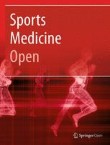Post-transplant diabetes mellitus (PTDM) beyond 12 months (late PTDM) is a severe complication after renal transplantation. Late PTDM develops mostly in subjects with prediabetes. Although exercise may have a ...
Authors:
Raúl Morales Febles, Domingo Marrero Miranda, Alejandro Jiménez Sosa, Ana González Rinne, Coriolano Cruz Perera, Ana Elena Rodríguez-Rodríguez, Alejandra Álvarez González, Laura Díaz Martín, Natalia Negrín Mena, Cristian Acosta Sørensen, Lourdes Pérez Tamajón, Aurelio Rodríguez Hernández, Federico González Rinne, Aday Dorta González, Eusebio Ledesma Pérez, Alejandra González Delgado…
Citation:
Sports Medicine - Open
2023
9:32
Content type: Original Research Article
Published on: 18 May 2023

